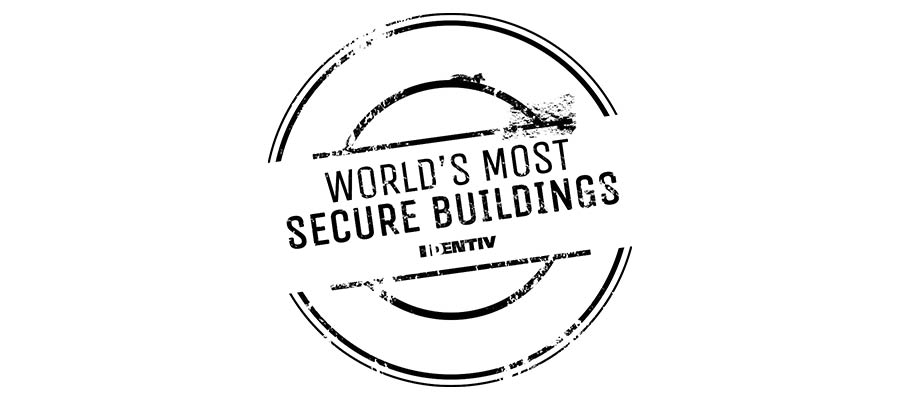The World’s Most Secure Buildings: U.S. Bullion Depository, Fort Knox
May 24, 2021
Operated by the United States Department of the Treasury, the U.S. Bullion Depository, Fort Knox, is a highly secure vault building next to the U.S. Army post of Fort Knox, Kentucky. The building sits on what is now the intersection of Bullion Boulevard and Gold Vault Road.
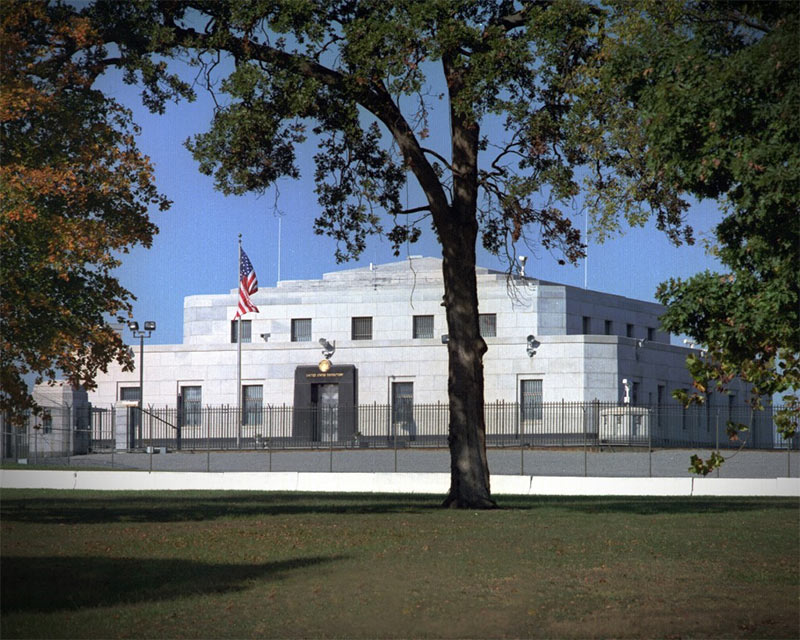
U.S. Bullion Depository, Fort Knox (Source: US Mint)
The vault hoards a great share of the country’s gold reserves along with other valuable items belonging to or under the supervision of the federal government. It presently reserves approximately 147 million ounces (4,580 metric tons) of gold bullion, which is more than half of the Treasury's deposited gold.
Other U.S. Bullion Depository locations include the West Point Mint, presently holding 54 million ounces (or 22%) of the country’s gold, with mints in Denver, Philadelphia, and San Francisco holding lesser shares. The U.S. Mint Police is responsible for protecting all federal depositories.
In 1988, the Fort was listed on the National Register of Historic Places for its reputation as a renowned landmark that is often mentioned in factual and fictional contexts. It holds great significance in U.S. economic history.
What makes the U.S. Bullion Depository, Fort Knox one of the world’s most secure buildings? Read on to find out.
U.S. Bullion Depository, Fort Knox Facts
- U.S. Bullion Depository holds 147.3 million ounces of gold. Approximately 50% of the Treasury’s gold, along with precious items of other federal organizations, is reserved in the Depository.
- It held 649.6 million ounces on December 31, 1941, the largest historic amount of gold assets.
- Inspectors only abstract insignificant quantities of gold to check purity. Apart from these samples, no gold has been transported to or from the vault for several years.
- The gold is kept as the country’s asset at a book value of $42.22 per ounce.
- Typical size of a gold bar stored in the Depository is 7 x 3 5/8 x 1 3/4 inches.
- Weight of a typical gold bar is around 400 ounces (27.5 pounds).
- Only a few people know about the actual construction and content of the building. However, no individual knows all the techniques to unlock the vault.
- In 1937, the first gold reached Fort Knox by U.S. Mail.
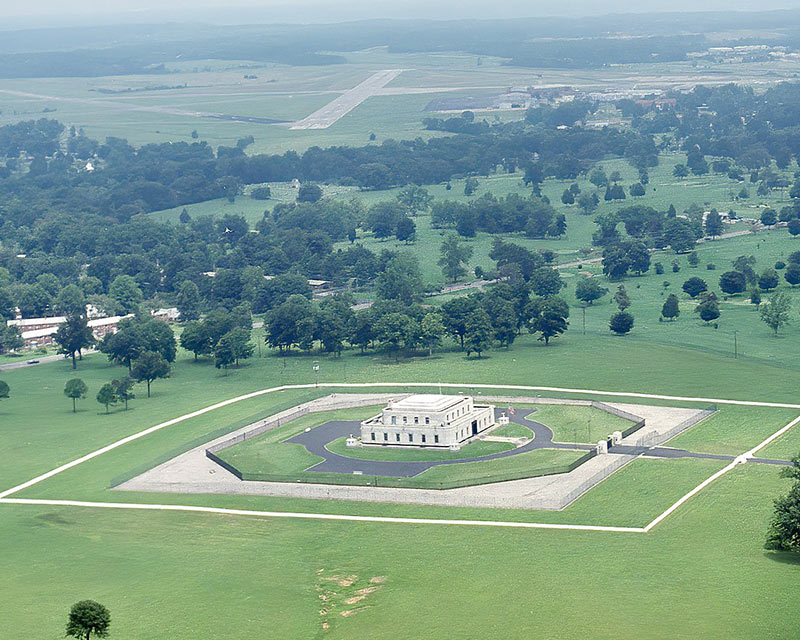
U.S. Bullion Depository, Fort Knox (Source: US Mint)
Construction of U.S. Bullion Depository, Fort Knox
The Depository measures 105 x 121 feet (32 x 37 meters) and is 42 feet (13 meters) above ground level. The cost of construction was a mere
$560,000 in the 1930s.
Materials
Materials used in construction include:
- 16,500 cubic feet (470 cubic meters) of granite
- 4,200 cubic yards (3,200 cubic meters) of concrete
- 750 short tons (680 metric tons) of reinforced steel
- 670 short tons (610 metric tons) of structural steel
Exteriors
The external wall is composed of concrete lined with granite. There are four guard boxes at every corner of the construction. At the entry gateway, guard boxes are positioned and over the marble front entrance the words "United States Depository" are engraved.
Above the inscription is the gold seal of the Department of the Treasury. At the back of the building is another entry used for receiving gold and other provisions.
Gold Vault
Under the fort-like building is the gold vault composed of steel plates, steel I-beams, and steel cylinders fastened with hoop bands and enclosed in concrete. The building is two stories high with an area of less than 4,000 square feet (370 square meters).
According to Mosler Safe Company, the vault constructor, both the vault gate and emergency gate are 21 inches (53 centimeters) thick and are made of the latest torch-and-drill-resistant material of the time.
The central vault gate weighs 20 short tons (18 metric tons) and the vault sheath is 25 inches (64 centimeters). The vault gate is set on a 100-hour time lock and is seldom unlocked. To unlock the vault, staff members must enter discrete combinations known only to them.
Escape Tunnel
The lower level of the vault features an escape tunnel leading into the main building for anyone locked in by chance. It can only be unlocked from inside the vault and only when the main vault gates are shut and sealed.
Surroundings
The building is enclosed by railings and is protected by the U.S. Mint Police. Many of these railings are said to be electrified. Each corner of the building features a guard tower operated by several security guards who keep an eye on each region.
Rings of razor wire and minefields are located between the outer boundary and the walls. The premises are scrutinized by high-res night vision cameras and microphones. The depository also boasts its own backup power and water systems. For security purposes, guests are not permitted inside the facility.
What Is Inside U.S. Bullion Depository, Fort Knox?
Some key items safeguarded in the Depository include:
Gold
Fort Knox presently holds 147.3 million ounces of gold. As per the government, the bullion has a book value of $6.22 billion, but that is based on a fixed value set from 1973. Based on the existing gold market value, the assets are worth more than $190 billion.
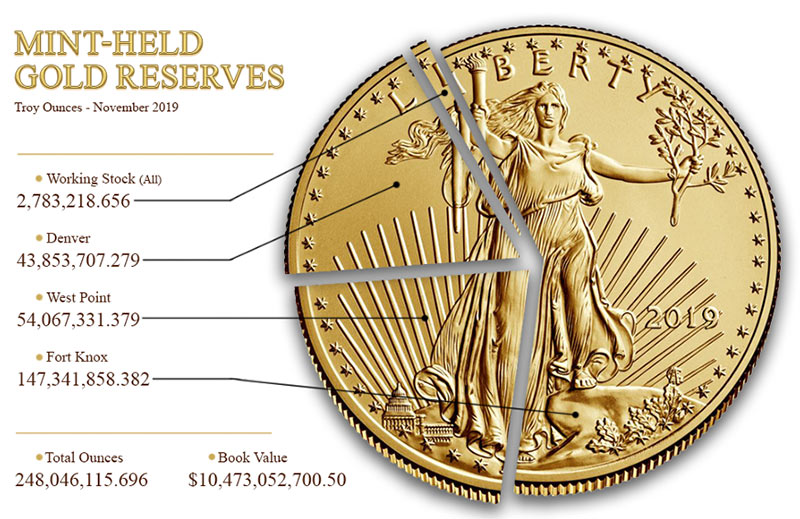
The amount of gold held at Fort Knox (Source: Bureau of Fiscal Service)
The gold mostly exists in the form of 27-pound bars, whereas some gold is in the form of coins. Initially, the objective of keeping this stockpile of gold was to offer support for U.S. currency, however, the dollar was taken off the gold standard in 1971.
Hoard of Drugs
Apart from gold, the Depository also keeps a reserve of drugs, including morphine sulfate. During the Cold War, the U.S. army wanted to be sure it had an abundant supply of pain medications if external opium sources were lost. Therefore, Fort Knox held plenty of opium in 1955. In 1993, the government expended millions refining the substance into morphine.
Historic Documents
During World War II, the gold vault served as a depository for the original copy of the U.S. Constitution, Declaration of Independence, and the original draft of Abraham Lincoln’s Gettysburg Address. In 1944, the documents were sent back to Washington, DC.
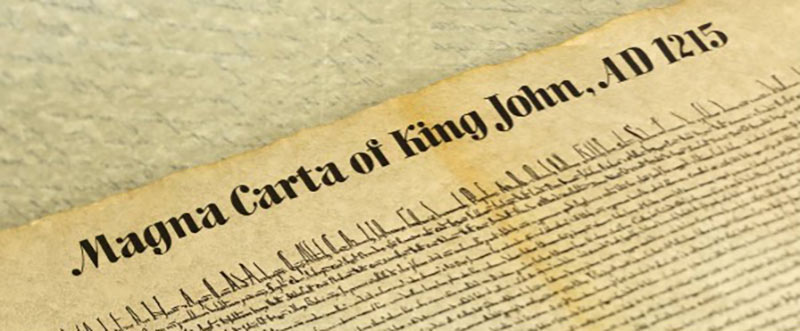
Magna Carta of King John, AD 1215 (Source: Moneywise)
The vault previously deposited precious objects for other government organizations, such as the Magna Carta, and the crown, sword, scepter, orb, and cape of St. Stephen, King of Hungary before returning them to Hungary in 1978.
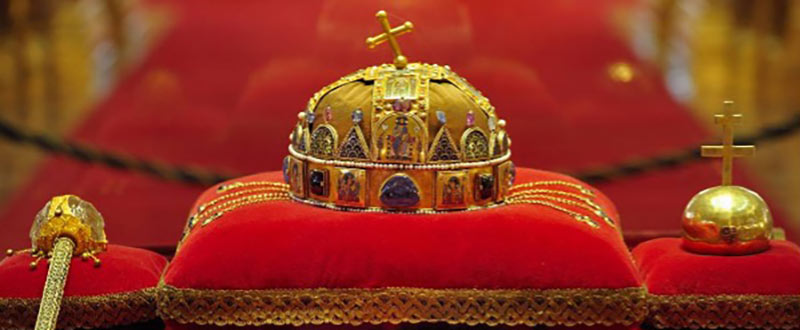
The Holy Crown of Hungary (Source: Moneywise)
What Makes U.S. Bullion Depository, Fort Knox One of the World’s Most Secure Buildings?
“As secure as Fort Knox” is a staple in American slang indicating absolute security of any person, place, or thing. The Depository has gone through many modifications during its 80-year history.
The security of the Depository is well-known for its mysteriousness and legendary mythology. Only a few people know the real structure of the facility and the items safeguarded inside. No one knows all the techniques to unlock the vault.
Blast Proof Doors and Roof
Enclosed by a series of railings and built with granite walls, the vault is sheltered by a 20-ton blast-proof security gate that requires codes unique to every depository staff member.
The roof is said to be explosion-proof. According to the Treasury, nobody knows the whole combination to open the door, which is resilient to torches, military exercises, and explosives.
Electronics
The mechanical defenses in the structure include automatic electric-signal systems and telephones, radios, and microphones. The building is also said to be equipped with laser wire and seismographic sensors to guarantee that no one approaches unnoticed.
Visitor Restrictions
Although the U.S. Bullion Depository does not possess as much gold as the Federal Reserve Bank of New York, entrance to Fort Knox is more limited.
While everyday excursions operate in the Federal Reserve facility, the Depository has only permitted external guests into the building twice since its completion in 1936: once in 1974 and then in 2017.
Presence of Army Officers
The Depository is near the Fort Knox Army post which provides extra security. Fort Knox is protected by the U.S. Mint Police, one of the oldest federal law enforcement organizations.
The officers go through 12 weeks of elementary training followed by an additional five weeks of field training. They learn extensive skills, including how to handle weapons, confronting, door entry, and room clearing.
If that does not appear daunting enough, Fort Knox is located at the center of a 109,000-acre U.S. Army post and is a training site for troops from across the country. There are living apartments for the guards and there is a pistol range for practice underground.
Secure Your Building with Identiv
Identiv’s flexible physical access control system (PACS) and video intelligence solutions deliver the highest security at the lowest cost. Regardless of your physical location, effortlessly manage access control through our robust, feature-rich systems, hardware, and software.
To learn more about our PACS solutions, contact us at +1 888.809.8888 or sales@identiv.com.
